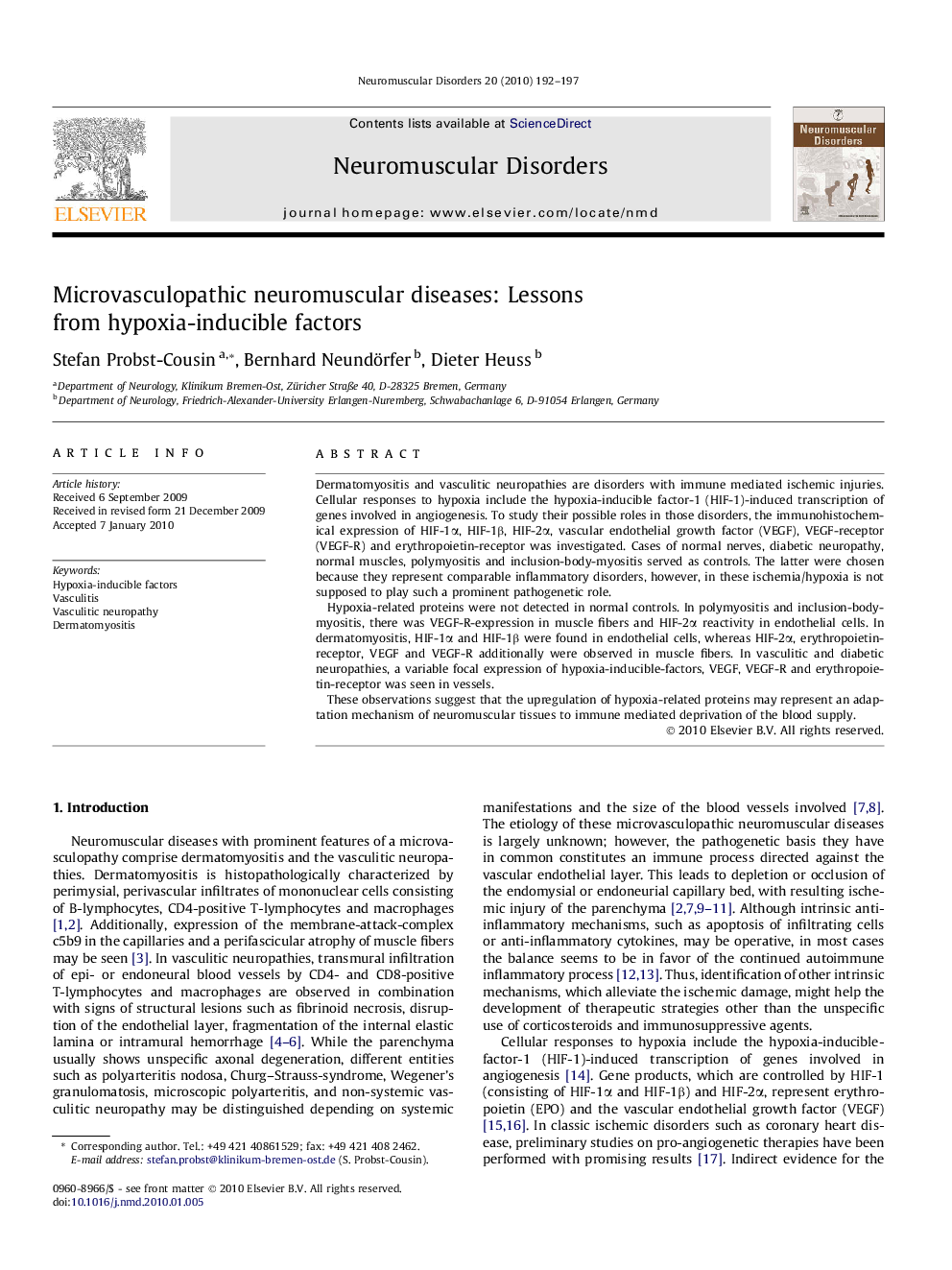| Article ID | Journal | Published Year | Pages | File Type |
|---|---|---|---|---|
| 3079800 | Neuromuscular Disorders | 2010 | 6 Pages |
Dermatomyositis and vasculitic neuropathies are disorders with immune mediated ischemic injuries. Cellular responses to hypoxia include the hypoxia-inducible factor-1 (HIF-1)-induced transcription of genes involved in angiogenesis. To study their possible roles in those disorders, the immunohistochemical expression of HIF-1α, HIF-1β, HIF-2α, vascular endothelial growth factor (VEGF), VEGF-receptor (VEGF-R) and erythropoietin-receptor was investigated. Cases of normal nerves, diabetic neuropathy, normal muscles, polymyositis and inclusion-body-myositis served as controls. The latter were chosen because they represent comparable inflammatory disorders, however, in these ischemia/hypoxia is not supposed to play such a prominent pathogenetic role.Hypoxia-related proteins were not detected in normal controls. In polymyositis and inclusion-body-myositis, there was VEGF-R-expression in muscle fibers and HIF-2α reactivity in endothelial cells. In dermatomyositis, HIF-1α and HIF-1β were found in endothelial cells, whereas HIF-2α, erythropoietin-receptor, VEGF and VEGF-R additionally were observed in muscle fibers. In vasculitic and diabetic neuropathies, a variable focal expression of hypoxia-inducible factors, VEGF, VEGF-R and erythropoietin-receptor was seen in vessels.These observations suggest that the upregulation of hypoxia-related proteins may represent an adaptation mechanism of neuromuscular tissues to immune mediated deprivation of the blood supply.
